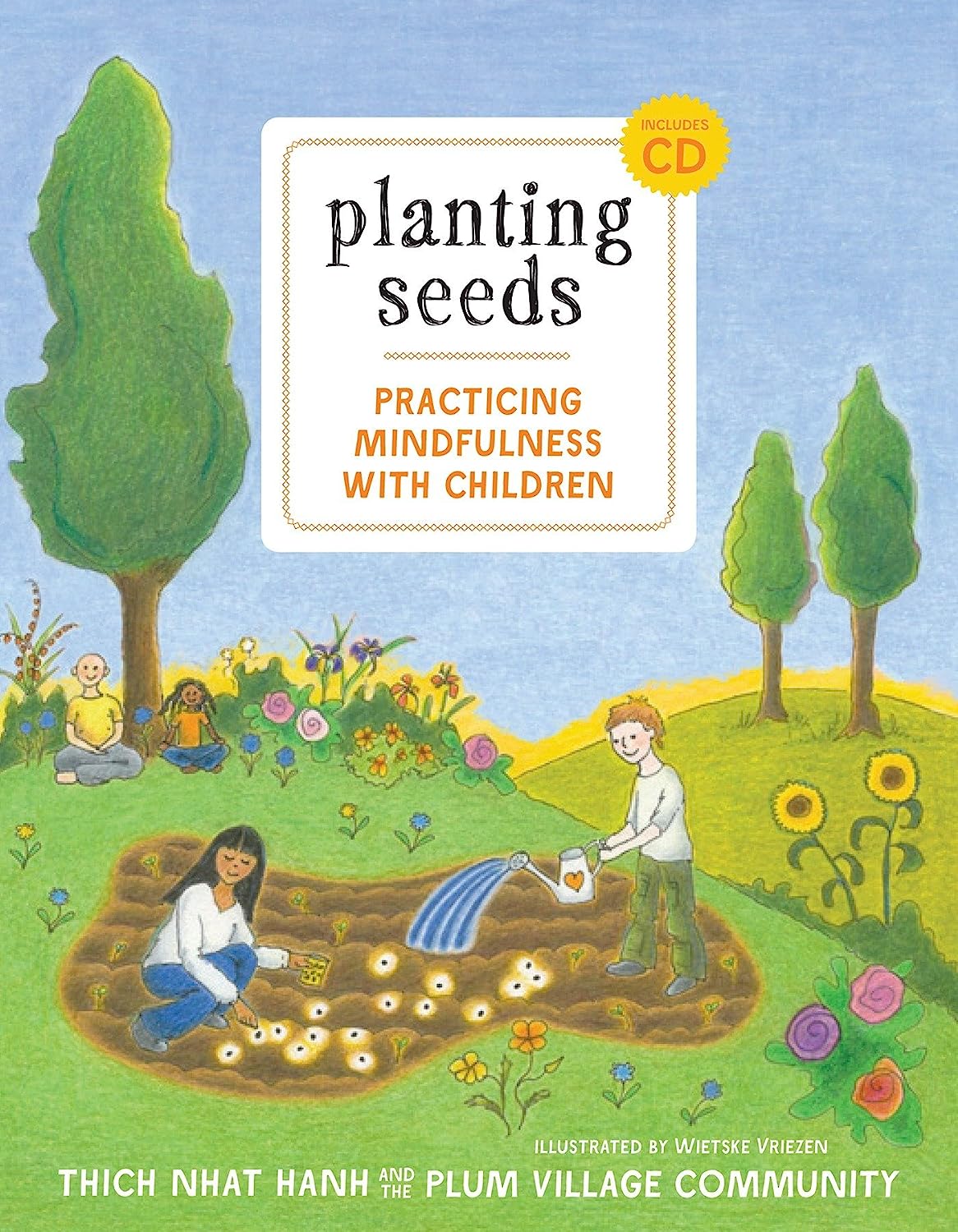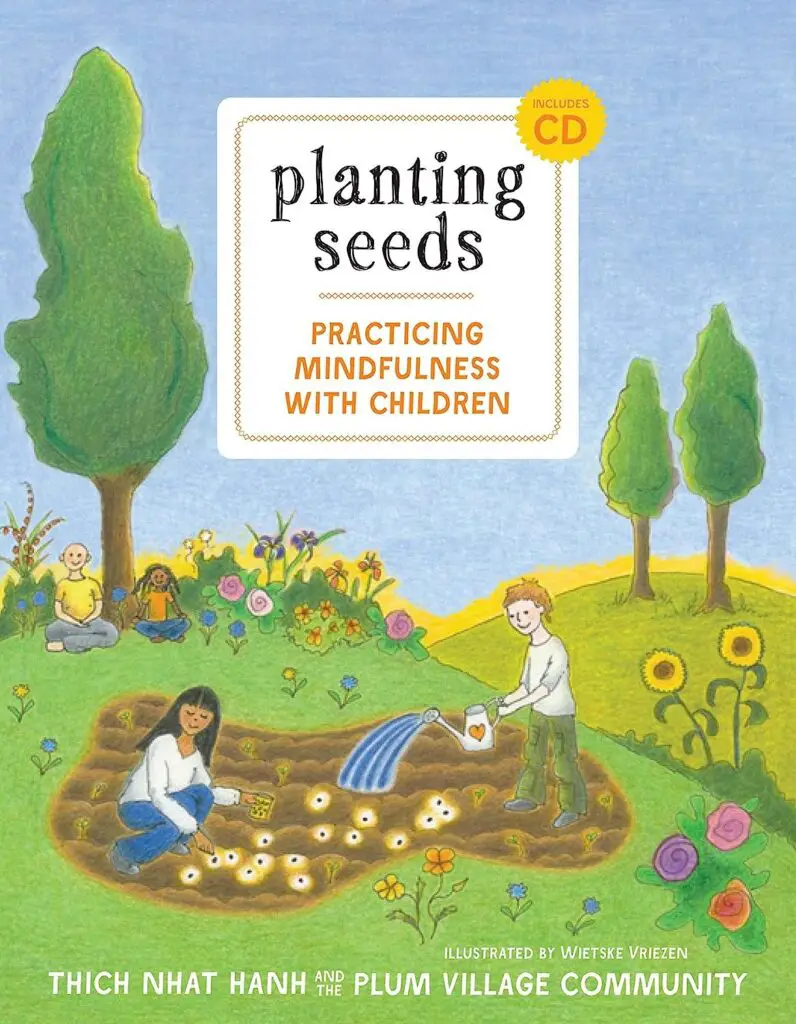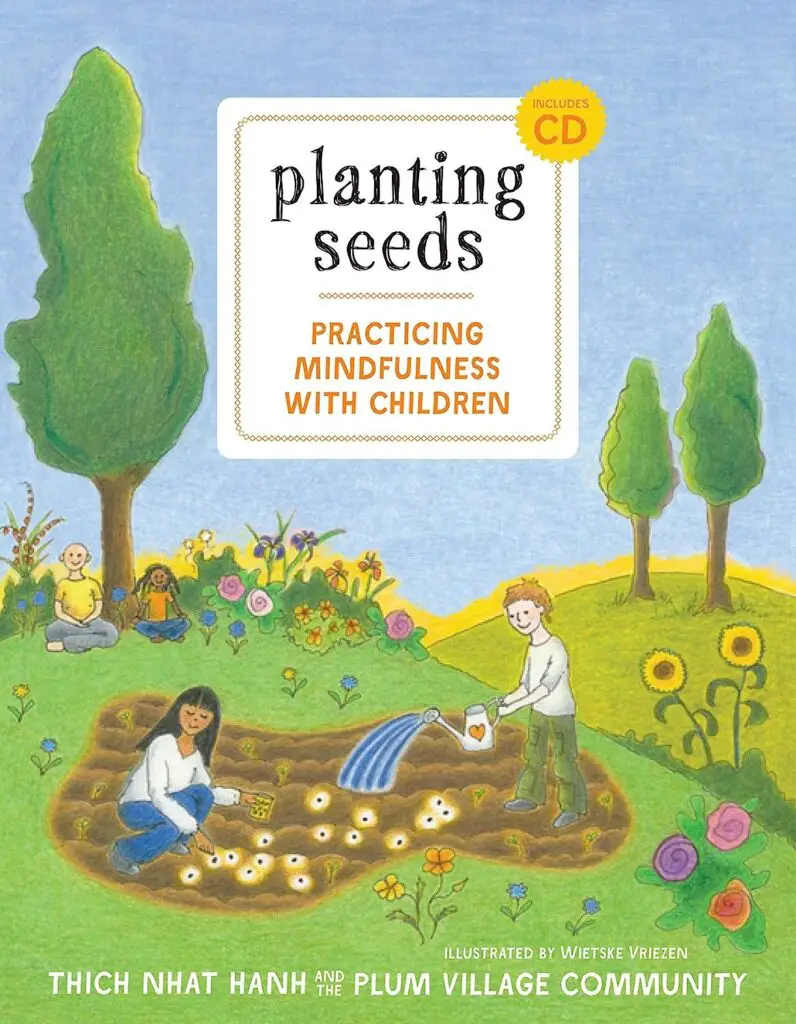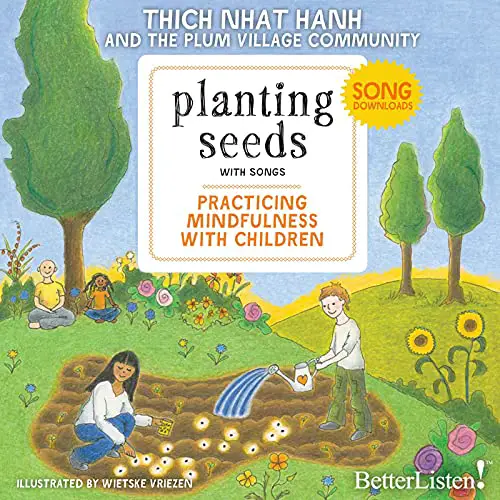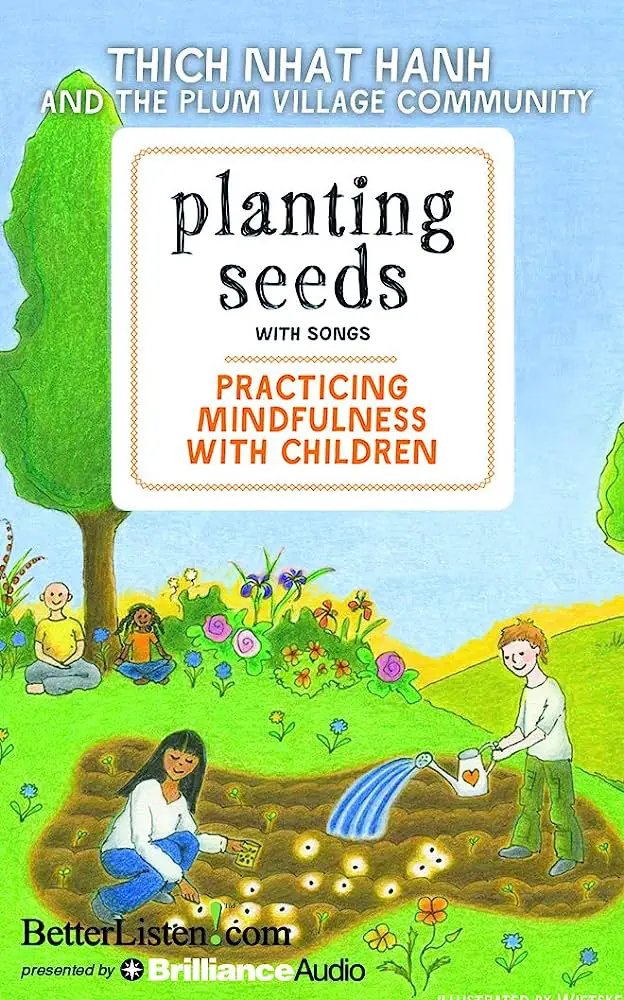This post may contain affiliate links which means I may receive a commission for purchases made through links. Learn more on my Private Policy page.
In this review, we’re going to take a deeper look at a product called “Planting Seeds: Practicing Mindfulness with Children.” If you’re someone who believes in the importance of teaching mindfulness to children, then this product is perfect for you. By incorporating mindfulness practices into your children’s daily routine, you can help them develop emotional resilience, improve their focus and attention span, and enhance their overall well-being. With “Planting Seeds,” you’ll have access to a variety of guided mindfulness exercises, fun activities, and valuable resources that can make teaching mindfulness to children an easy and enjoyable experience.
Now, let’s talk about the drawbacks of not owning this product. Without “Planting Seeds,” you may find it challenging to introduce mindfulness to your children, as you might not know where to start or which practices are suitable for their age. Additionally, the lack of structured guidance and resources could make it harder for you to maintain consistency in your mindfulness practice. By not having access to “Planting Seeds,” you may miss out on the numerous benefits that mindfulness can bring to your children’s lives, such as improved self-regulation skills, reduced stress and anxiety, and enhanced social-emotional development.
Stay tuned as we delve into a comprehensive review of “Planting Seeds: Practicing Mindfulness with Children” and explore how this product can help you create a mindful and nurturing environment for your little ones.
How “Planting Seeds: Practicing Mindfulness with Children” Works
“Planting Seeds: Practicing Mindfulness with Children” is a comprehensive guide designed to help parents and educators teach children mindfulness and cultivate a sense of calm and presence in their everyday lives.
The book is divided into three main sections: Knowing, Mindfulness Activities, and Growing. In the Knowing section, the author explains the concept of mindfulness, its benefits, and provides guidance on how to introduce mindfulness to children. The Mindfulness Activities section offers a wide range of age-appropriate exercises and techniques that can be easily incorporated into daily routines. Finally, the Growing section emphasizes the importance of nurturing mindfulness as an ongoing practice and provides strategies for fostering resilience and emotional well-being in children.
Encourages Self-Awareness
One of the key features of “Planting Seeds: Practicing Mindfulness with Children” is its emphasis on developing self-awareness. The book provides activities that prompt children to explore their inner experiences, such as their thoughts, emotions, and physical sensations. By developing self-awareness, children can better understand and manage their emotions, build empathy, and improve their overall well-being.
Promotes Mindful Breathing
Mindful breathing is a foundational practice in mindfulness, and this book includes various exercises that encourage children to focus on their breath. Through simple yet engaging activities, children learn to anchor their attention on their breath, which helps regulate their emotions, reduce stress, and improve concentration. The book also provides guidance on how to adapt these exercises for different age groups, ensuring that the practices are accessible and beneficial for children of all ages.
Cultivates Gratitude and Kindness
“Planting Seeds: Practicing Mindfulness with Children” also places great importance on cultivating gratitude and kindness in children’s lives. The book offers practices and exercises that help children develop an attitude of gratitude, appreciate the present moment, and foster a sense of connection with others. By encouraging acts of kindness and teaching children to recognize the positive qualities in themselves and others, this book promotes a more compassionate and inclusive mindset.
“Planting Seeds: Practicing Mindfulness with Children” Uses
“Planting Seeds: Practicing Mindfulness with Children” can be used in a variety of settings and situations to help children develop mindfulness skills. Here are some of the product uses:
Home Setting
- Incorporating mindfulness practices into morning and bedtime routines to help children start and end their day in a calm and centered manner.
- Using mindful eating exercises to promote healthy eating habits and mindful awareness of the flavors and textures of food.
- Introducing mindfulness practices during moments of conflict or stress to support emotional regulation and a peaceful resolution.
School Setting
- Integrating mindfulness activities into classroom routines to help students develop focus, concentration, and self-regulation skills.
- Using mindfulness breaks or short exercises to promote relaxation and stress reduction during particularly challenging or high-energy periods of the school day.
- Including mindfulness practices during transitions between activities to create a sense of presence and ease.
Therapy or Counseling Setting
- Incorporating mindfulness techniques into therapeutic interventions to assist children in managing anxiety, stress, or trauma-related symptoms.
- Using mindfulness practices to teach children body awareness and grounding techniques for emotional self-regulation.
- Guiding children in cultivating self-compassion and self-care through mindfulness exercises.
This image is property of Amazon.com.
Product Specifications
Here is a breakdown of the specifications of “Planting Seeds: Practicing Mindfulness with Children”:
| Specification | Details |
|---|---|
| Format | Paperback |
| Pages | 200 |
| Age Range | 3 – 12 years old |
| Publisher | Mindful Kids |
| Language | English |
Who Is “Planting Seeds: Practicing Mindfulness with Children” For
“Planting Seeds: Practicing Mindfulness with Children” is a valuable resource for parents, teachers, counselors, or anyone who works with children and wants to introduce them to the practice of mindfulness. The book provides practical guidance and age-appropriate activities that can be tailored to suit the needs of children between the ages of 3 and 12.
Parents
Parents who wish to support their children’s emotional well-being and foster a sense of calm and resilience will find “Planting Seeds: Practicing Mindfulness with Children” to be an invaluable tool. The book offers practical tips, strategies, and activities that can be easily integrated into daily family routines, helping children develop mindfulness skills in a nurturing and supportive environment.
Educators
Teachers and educators can use “Planting Seeds: Practicing Mindfulness with Children” to create a more mindful and inclusive learning environment. The activities and exercises in the book can be adapted for various classroom settings and age groups, providing teachers with valuable tools to support their students’ social-emotional development and enhance their overall learning experience.
Therapists and Counselors
Therapists and counselors working with children can incorporate the mindfulness practices and techniques from “Planting Seeds: Practicing Mindfulness with Children” into their therapeutic interventions. Mindfulness-based approaches have been shown to be effective in enhancing emotional well-being, reducing anxiety, and supporting trauma recovery in children, making this book a valuable resource in therapeutic settings.
This image is property of Amazon.com.
Pros and Cons
Pros:
- Comprehensive and accessible guide to introducing mindfulness to children.
- Age-appropriate activities and exercises that can be easily adapted to different settings.
- Emphasizes self-awareness, gratitude, and kindness.
- Provides practical tips for integrating mindfulness into daily routines.
- Suitable for parents, educators, and mental health professionals working with children.
Cons:
- The book primarily focuses on mindfulness practices for children ages 3-12, limiting its applicability for older age groups.
- Some activities may require supervision or guidance, especially for younger children.
FAQ’s
Q: Can I use this book if I have no prior experience with mindfulness? A: Absolutely! “Planting Seeds: Practicing Mindfulness with Children” is designed to be accessible and user-friendly, providing guidance and step-by-step instructions for individuals new to mindfulness.
Q: Can the activities in the book be adapted for children with special needs? A: Yes, many of the activities can be modified to suit the specific needs and abilities of children with special needs. However, some adaptations may be necessary. Consulting with a specialist or therapist can provide additional guidance.
Q: Can I use the book with older children? A: While the book primarily focuses on children between the ages of 3 and 12, some practices and concepts can be adapted for older children. However, it may be beneficial to supplement the book with additional resources that cater to older age groups.
This image is property of Amazon.com.
What Customers Say About “Planting Seeds: Practicing Mindfulness with Children”
“This book has been a game-changer for our family. The activities are engaging and easy to implement, and our children have become more self-aware and emotionally resilient since we started incorporating mindfulness into our daily routine.” – Sarah W., parent
“As a teacher, I’m constantly looking for ways to create a more calm and focused learning environment. This book has given me a wealth of practical strategies and activities that my students love. The impact on their overall well-being and classroom dynamics has been remarkable.” – Mark T., teacher
Overall Value
“Planting Seeds: Practicing Mindfulness with Children” offers tremendous value for anyone seeking to introduce mindfulness to children. The book provides a comprehensive and well-structured guide, offering practical tips, age-appropriate activities, and strategies for cultivating mindfulness and emotional well-being in children. Its versatility makes it suitable for parents, educators, and mental health professionals alike.
This image is property of Amazon.com.
Tips and Tricks for Best Results
- Start with short mindfulness exercises and gradually increase the duration as children become more comfortable with the practice.
- Make mindfulness activities fun and engaging by incorporating props, games, or storytelling.
- Be consistent and integrate mindfulness into daily routines to reinforce its benefits.
- Model mindfulness yourself to inspire children and create a shared practice.
Conclusion
In conclusion, “Planting Seeds: Practicing Mindfulness with Children” is an exceptional resource for parents, educators, and anyone working with children who wants to instill mindfulness in their lives. The book’s comprehensive approach, age-appropriate activities, and emphasis on self-awareness, gratitude, and kindness make it an invaluable tool for promoting emotional well-being and fostering resilience in children. By incorporating the practices and strategies outlined in this book, you can help children cultivate mindfulness and equip them with essential life skills for navigating the challenges and joys of growing up.
This post may contain affiliate links which means I may receive a commission for purchases made through links. Learn more on my Private Policy page.

